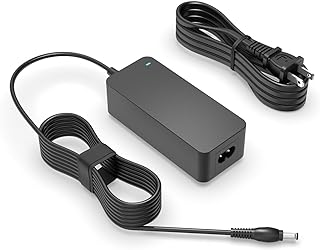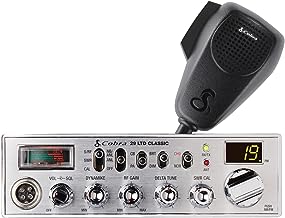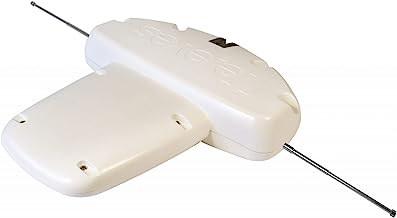5 important factors worth considering when looking for the best indoor antenna
When choosing an indoor antenna for better TV viewing without cable, you need to consider several important factors. With so many options available, it’s essential to understand what’s most important to ensure a great entertainment experience. Things like signal strength, how far the antenna can reach, its design, and whether it will work with your TV are all crucial in creating a smooth, high-quality viewing experience. By paying attention to these key aspects, you can make sure you get the best antenna for uninterrupted, clear entertainment enjoyment.
See our guide to the best indoor antenna.
Signal range and reception quality
When you’re buying an indoor antenna, the signal range and reception quality are important factors that can impact how well your TV works. It’s crucial to think about these things carefully to make sure your antenna works as best as it can. A stronger signal range means you’ll have more channels to choose from and better picture and sound quality. On the other hand, if the reception isn’t good, you might have interruptions and blurry pictures that make your TV-watching experience frustrating. By focusing on signal range and reception quality when choosing an antenna, you can make sure you get the most out of your setup and have a better TV-watching experience.
Getting an indoor antenna with a long signal range and good reception is a smart choice if you want to improve your TV viewing. A reliable antenna will give you clear and uninterrupted TV shows without any problems. By paying attention to signal strength and reception quality, you can have a smooth and enjoyable entertainment experience that meets your expectations. Choosing an indoor antenna that does well in both signal range and reception quality will give you better TV quality and sound on a wide variety of channels.
Antenna type (e.g. omnidirectional or directional)
When you’re buying an indoor antenna, you’ll need to decide between two main types: omnidirectional and directional antennas. Omnidirectional antennas can pick up signals from all directions, making them great for city areas with lots of broadcasting towers. On the other hand, directional antennas focus on receiving signals from specific directions, which is helpful in rural areas with weaker signals or signals coming from certain spots. Your choice will depend on where you live and the broadcasting setup around you.
In addition to considering the type of antenna, it’s important to think about your own needs and preferences. If you like things simple and easy, an omnidirectional antenna might be best. But if you want the clearest signal possible, a directional antenna could be better for you. Choosing between these two types means balancing convenience and performance. By taking into account where you are, where signals are coming from, and what you prefer, you can make a smart decision that improves your TV viewing and gives you the best signal possible.
Size and design of the antenna
When you’re buying an indoor antenna, the size and design can make a big difference in how well it works. A bigger antenna is better at picking up signals, especially in places where the signal is weak. The way the antenna looks can also affect how well it works. A modern design can make it look nice in your home and work well at the same time.
It’s important to think about size and design when choosing an indoor antenna to make your TV setup better. Getting an antenna that matches your style can make it a cool decoration. Plus, a well-designed antenna can be put in the right spot for good signal without looking out of place in your room. By thinking about the size and design of the antenna, you can have a balance of how well it works and how good it looks, making your TV experience better.
Compatibility with TV models and broadcast frequencies
When you’re buying an indoor antenna for your TV, it’s important to make sure it works with your TV and the broadcast frequencies in your area. Many people only look at how the antenna looks or how much it costs, but what really matters is if it will work well with your setup. Different TVs have different tuner capabilities, so not all antennas will give you the best results. By checking which antennas work best with your TV’s specifications, you can avoid problems and have a better viewing experience.
It’s also crucial to know the broadcast frequencies in your area when choosing an indoor antenna. The switch from analog to digital broadcasting means there are new frequency standards, and not all antennas can handle these changes. By comparing the frequencies used by local stations with the antenna you’re thinking of buying, you can make sure you get a good signal. Ignoring this could lead to bad picture quality, limited channels, or no signal at all. Doing a bit of research to find an antenna that matches your TV and broadcast frequencies will pay off with better viewing and more channels to watch.
Installation ease and flexibility
When you’re looking to buy an indoor antenna, the two main things to consider are how easy it is to install and how flexible it is. These factors can really make a difference in how much you enjoy watching TV for free. An antenna that is simple to set up without needing special tools or knowledge can make it a lot easier to get good TV reception.
Having an antenna that is easy to adjust and position is also important. Being able to place it horizontally or vertically gives you more options to get the best picture and sound quality. This flexibility lets you customize your TV-watching experience based on where you are and how strong the signal is, making it more enjoyable for you.
Conclusion
In today’s world, streaming services are very popular and cable TV subscriptions are becoming less common. However, indoor antennas are a great option for people who want to save money and have more freedom in what they watch. They are easy to set up and budget-friendly, making them a good choice for those who want to avoid monthly bills while still having access to a variety of TV channels. Indoor antennas allow viewers to watch local news, sports, and network shows without being tied to a contract. They show that sometimes, the simplest solutions are the best. Indoor antennas are also a good option for people who want to keep up with the latest technology trends while saving money. Want more info on brushless rc trucks, check the best brushless rc trucks.


